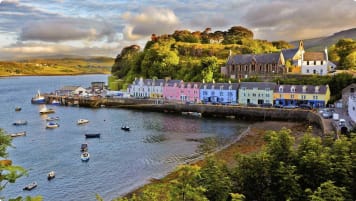Touring the beautiful Scottish Islands
Small group tours of the Scottish isles including Orkney, Skye, Iona and Shetland plus others for senior couples and solo travellers.
27 Jul 21 · 13 mins read
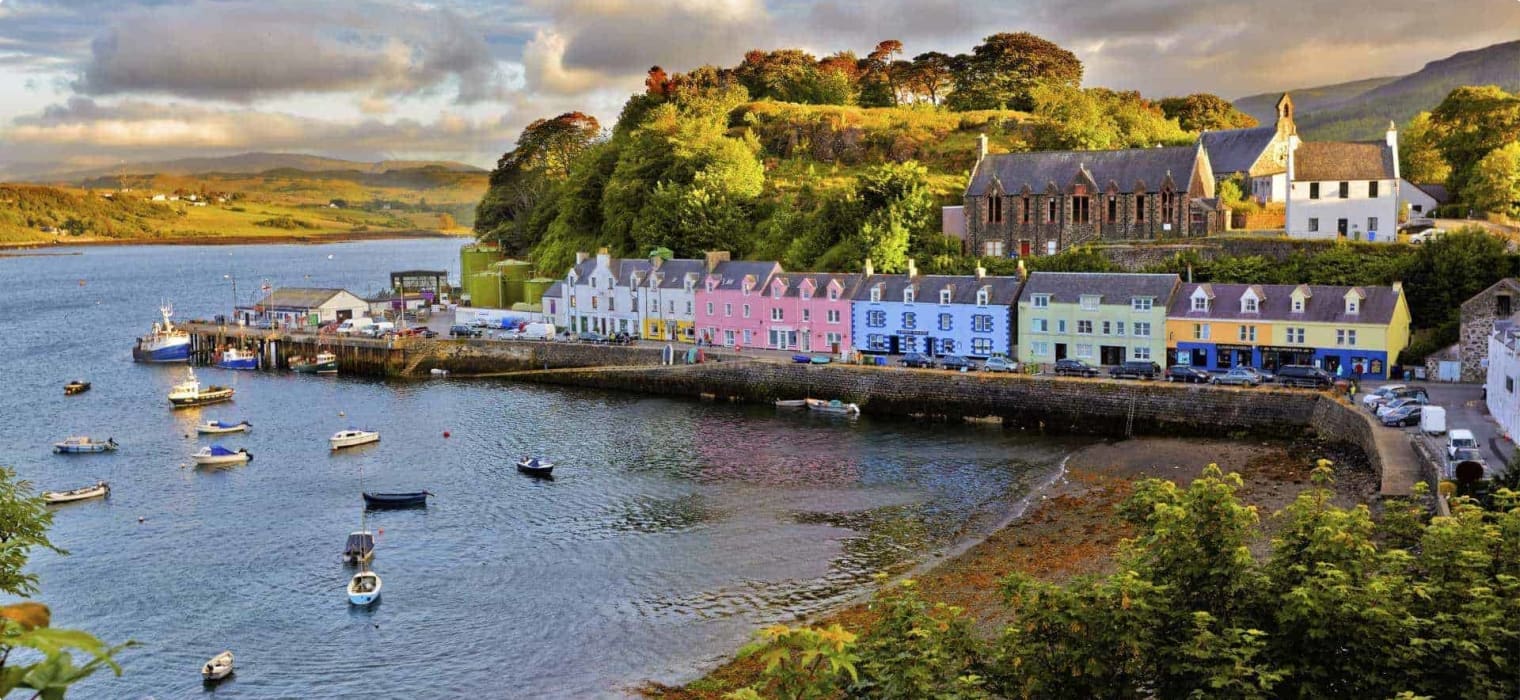
Touring the beautiful Scottish Islands:
Scotland is island-rich, with some of the most awesome scenery in the United Kingdom. There are nearly 800 islands around Scotland, scattered around its western and northern coastline. Each has its own individual character, identity and charm. Yet only 60 of these Scottish islands are populated, and ferries run to only 46. No point on any island is greater than eight kilometres from the sea.
Exploring these islands on a Scotland tour, with their sea-lochs, moors and grasslands dotted with sheep and cattle, is to walk through Scottish history. There are crofts abandoned during the Highland Clearances, ancient standing stones and brochs. The diverse geology and climate of the more remote islands influenced local landforms and land use, creating a unique culture and heritage.
There are three main groups of Scottish isles: The Inner and Outer Hebrides, the Orkney Islands, and the Shetland Islands. This post moves through each group, running clockwise from Glasgow to Edinburgh. Don’t miss these beautiful highlights if you’re considering Scottish island tours! We also include links to help you plan your tour of Scotland and explore some of the Scottish islands’ colourful history.
The Isle of Arran:
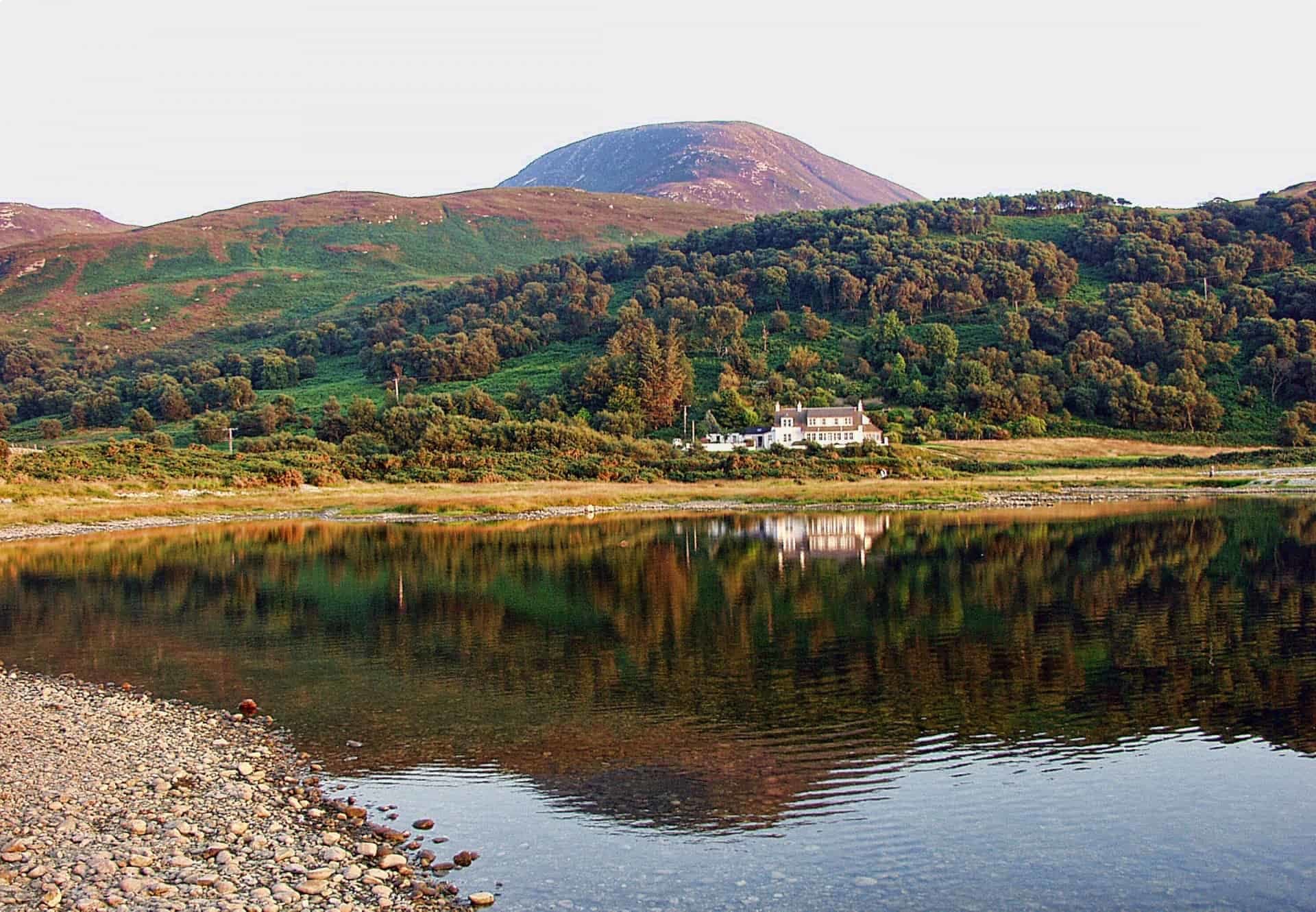
Our first stop is the Isle of Arran. To get there from Glasgow, travel to Ardrossan to get the ferry to Brodick on the Isle of Arran.
Though culturally similar to the Inner Hebrides, the Isle of Arran is technically separated from them by the Kintyre Peninsula.
Like most Scottish islands, the Isle of Arran has a long history. Scholars believe Arran was populated at the end of the last Ice Age. Arran was then settled by Vikings, who then sold it to the Scots after the Battle of Largs in 1263.
Arran continued to play an important role in Scottish history. It’s said that Robert the Bruce, the legendary Scottish warrior who led Scotland during the First War of Independence against England, got the signal to reinvade Scotland here in 1306 while his followers were harassing the English garrison at Arran’s Brodick Castle.
People describe Arran as Scotland in miniature, because of its rich geology – a scenic combination of mountains, low hills, lochs, streams and glens.
The island also boasts a number of Neolithic burial tombs and Bronze Age stone circles. This lovely red sandstone 13th century castle has a round tower and a walled garden, with a fine rhododendron collection and large wooded garden beyond.
Today, Arran is well known for outdoor activities and its whisky, cheese, and oatcakes.
To get to the Isle of Arran, travel from Glasgow to Ardrossan, and catch the ferry to Brodick on the island of Arran.
The Kintyre Peninsula:
Next, travel by ferry from Lochranza across Kilbrannan Sound to Claonaig on the long peninsula of Kintyre.
The Kintyre Peninsula is home to magnificent scenery, particularly as you move northwards along the peninsula towards Oban. Cross the Crinan Canal and travel through Kilmartin Vale. Stop off to visit the fine eight hectare garden at Arduaine, administered by the National Trust. It’s famous for its spectacular displays of rhododendrons and azaleas.
Make sure to also visit Dunadd Hill Fort in Kilmartin Glen, home to the Gaelic kings from the fifth to eight centuries.
Due to its busy ferry trade, the port of Oban is often referred to as the “Gateway to the Isles”. From here you can take the ferry across to Craignure on the Isle of Mull.
The Inner Hebrides: The Isle of Mull
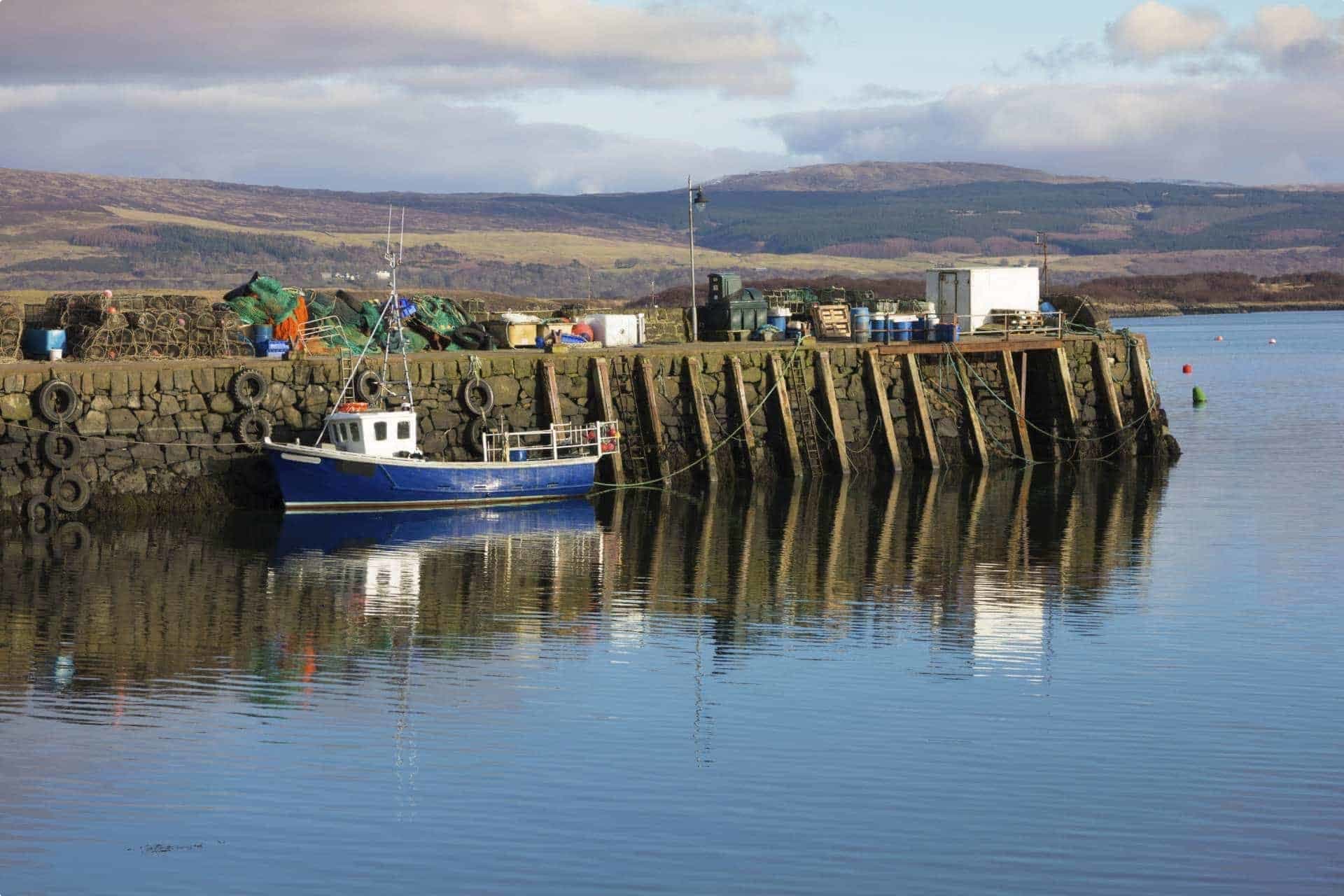
The Inner Hebrides are an archipelago lying close to the western coast of Scotland, stretching 240 kilometres from Skye in the north to Islay in the south. The Inner Hebrides are marked by their rugged scenery, and a culture that still bears strong Gaelic influence. The Gaelic language continues to be spoken in some areas today.
Mull is the third largest of the Hebrides islands. Its scenery includes rough moorlands, forests, many sea lochs and the mountainous rocky peak of Ben More (966 metres). Ben More is part of a landscape developed from separate flows of lava over 50 million years ago. Some of these flows cooled into masses of columnar basalt, most of them hexagonal or pentagonal in shape. Weathering created terraces in the higher country and a stunning coastline, especially the cliff scenery in the south where the ‘organ pipe’ columns are found.
The complex struggle between rival clans in their hope for favour, ascendancy, and land control in the name of religion is demonstrated on Mull. As Norse control diminished, by 1266 the Lord of the Isles had gained ascendency. Because of an indiscrete allegiance, King Robert (the Bruce) allocated this powerful position to the Macdonald clan. They held this role until 1543 when the Campbells gained ascendancy. During these times both the MacLeans of Durat and the Mackinnons of Mull, although aligned with the Macdonalds, were able to maintain their status with the Campbells. Today you can visit the 13th century Duart Castle, the ancestral home of the chief of the MacLean clan. The Chief of the MacLean Clan restored this imposing building overlooking the Sound of Mull in 1910.
The pretty fishing village of Tobermory is the main centre on Mull and has colourful buildings lining the harbour. The British Fisheries Society built the town in 1788 and today it is the main centre for Mull. Major General Lachlan Macquarie (1761 – 1824), Australian Governor for 22 years, is a native of Mull, born on the island of Ulva. The National Trust of Australia maintains his mausoleum at nearby Gruline.
The Isles of Iona and Staffa
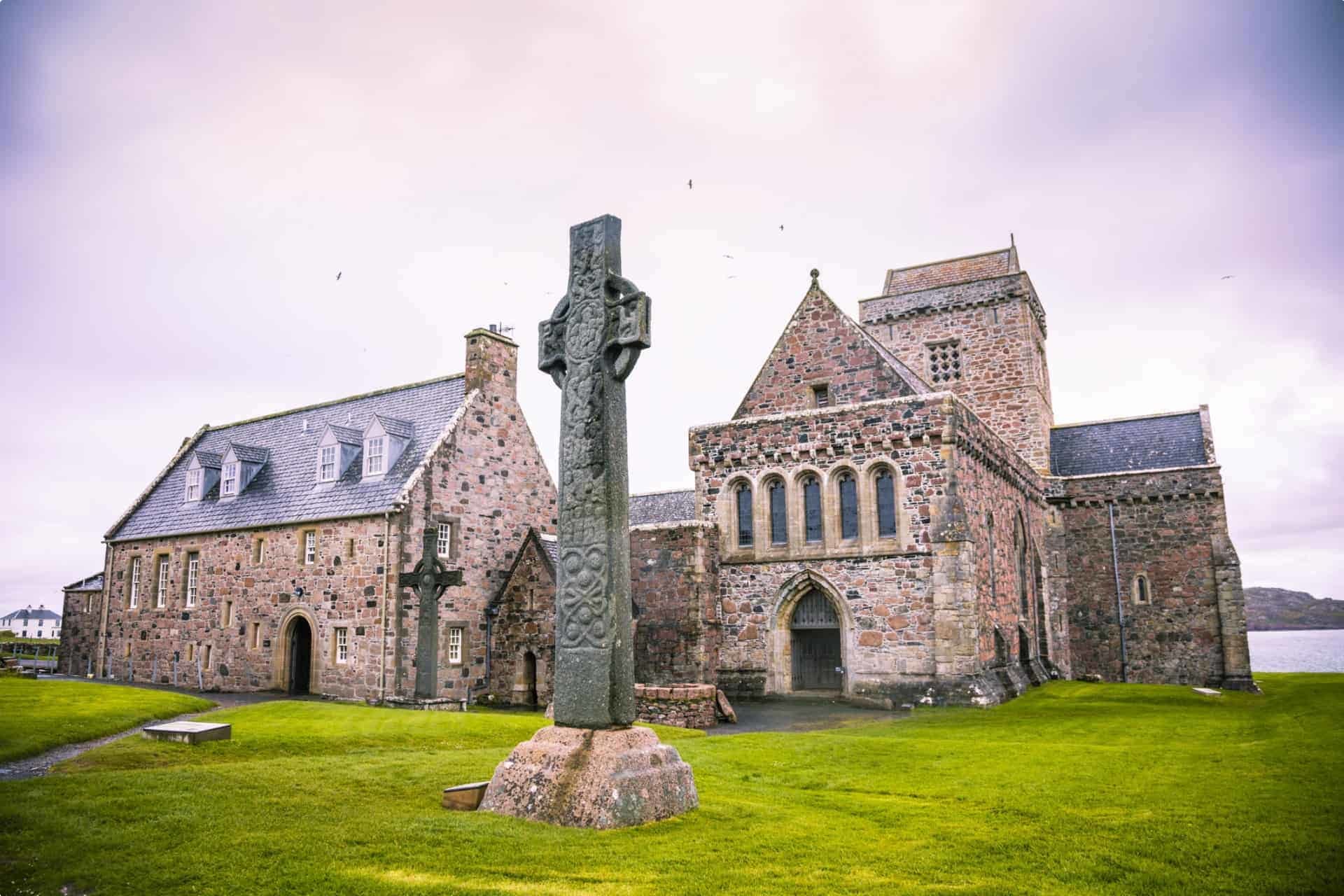
The Isles of Iona and Staffa are two of the smaller islands of the Inner Hebrides, noted for their historical importance and natural beauty. Staffa has a similar geologic formation to Northern Ireland’s Giants Causeway and the basalt formations on Mull. Fingal’s Cave is one of many caves on the island formed through wave action and other weathering agents. This is one of Scotland’s natural wonders and the inspiration for Mendelssohn’s Hebrides Overture.
Tranquil Iona is the birthplace of Celtic Christianity in Britain. Consequently, it became the traditional burial ground of Scottish Kings, Clan Chieftains and the Lords of the Isles. Iona’s restored abbey stands on the site where the Irish saint, Columba, began his crusade in 563. Christianity spread from here to other islands and to the mainland, but repeated Viking plunders, starting in 795, forced most Christian activity to return to Ireland. The Protestant Bishop of the Isles annexed the church in 1617, and the Church of Scotland restored the abbey in the early 1900s. Today there is a nunnery, founded about the same time as the monastery, a burial ground and the main abbey surrounded by St Columba’s Shrine, the site of St Columba’s cell, some high crosses and two chapels. Many of these buildings were built in the 13th century.
Crofters once used Iona for summer grazing of sheep, but all the livestock left in 1997. This has led to a regeneration of the island’s vegetation. Puffins, black-legged kittiwakes, common shags and gulls nest on the island, and the surrounding waters provide a suitable environment for numerous seabirds, grey seals, dolphins, basking sharks, minke, and pilot whales.
The Isle of Skye
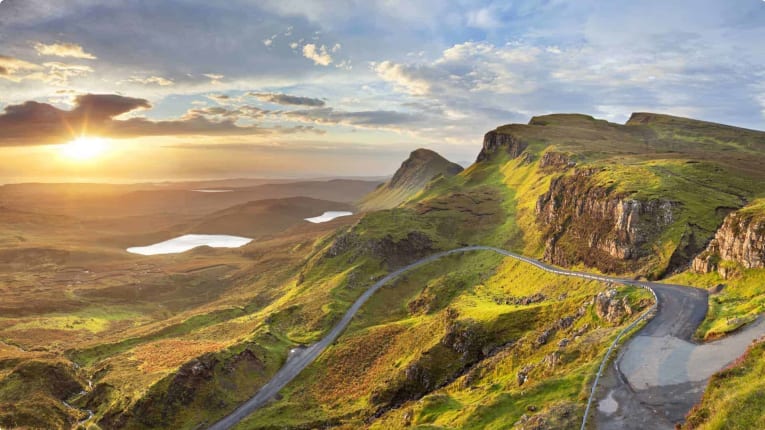
We next take the ferry from Fishnish to Lochaline, then drive via Fort William to Mallaig before another ferry trip across to Armadale on the lovely Isle of Skye.
Skye derives its name from the Viking skuyo meaning “cloud island”. It’s the largest island of the Inner Hebrides, yet thought of as part of the Highlands. Skye is home to common seals, grey seals, sea otters, great black-backed gulls, hooded crows, herring gulls and oystercatchers. It’s also rich in flora, with a number of rare species including a sorrel native to Iceland. Driving through Skye gives you spectacular scenery at most turns in the road. At its southern end on the Sleat Peninsula, you’ll find Armadale Castle and the Clan Donald Centre. A large diverse garden with several unexpected plants species adjoins the castle. John Macdonald, Australia’s first land commissioner, named Armidale in New South Wales after this location in the 1830s.
Another outstanding feature of Skye is the Cuillin Hills. These are quite bare in places with few trees, but have lots of bare rock, heather, gorse and fern. You’ll also see many abandoned crofts that pay testament to the brutal Highland Clearances which followed the battle of Culloden in 1746. These clearances allowed landholders to cleared crofters off fertile land to make way for their sheep. Bonnie Prince Charlie took refuge on Skye after the battle of Culloden. Flora MacDonald assisted his passage, and the Skye Boat Song commemorates this event. A French vessel rescued him, saving him from those chasing him for the £30,000 reward.
The town of Dunvegan, northwest of Portree, grew up around Dunvegan Castle. This is the seat of the chiefs of Clan MacLeod and the castle has been their home for well over 700 years. It has many clan relics on display, including a Fairy Flag with a most interesting history! Nearby, visit the Talisker Whisky Distillery for a wee dram (shot).
After exploring Skye, continue on to the islands of Lewis and Harris. First of all, drive to Uig in the north of Skye, stopping off to see the Old Man of Storr and Quirang. Then catch a ferry across to Tarbert on the island of Harris, to continue your tour of Scotland’s islands on the Outer Hebrides.
The Outer Hebrides: The Isle of Lewis and Harris
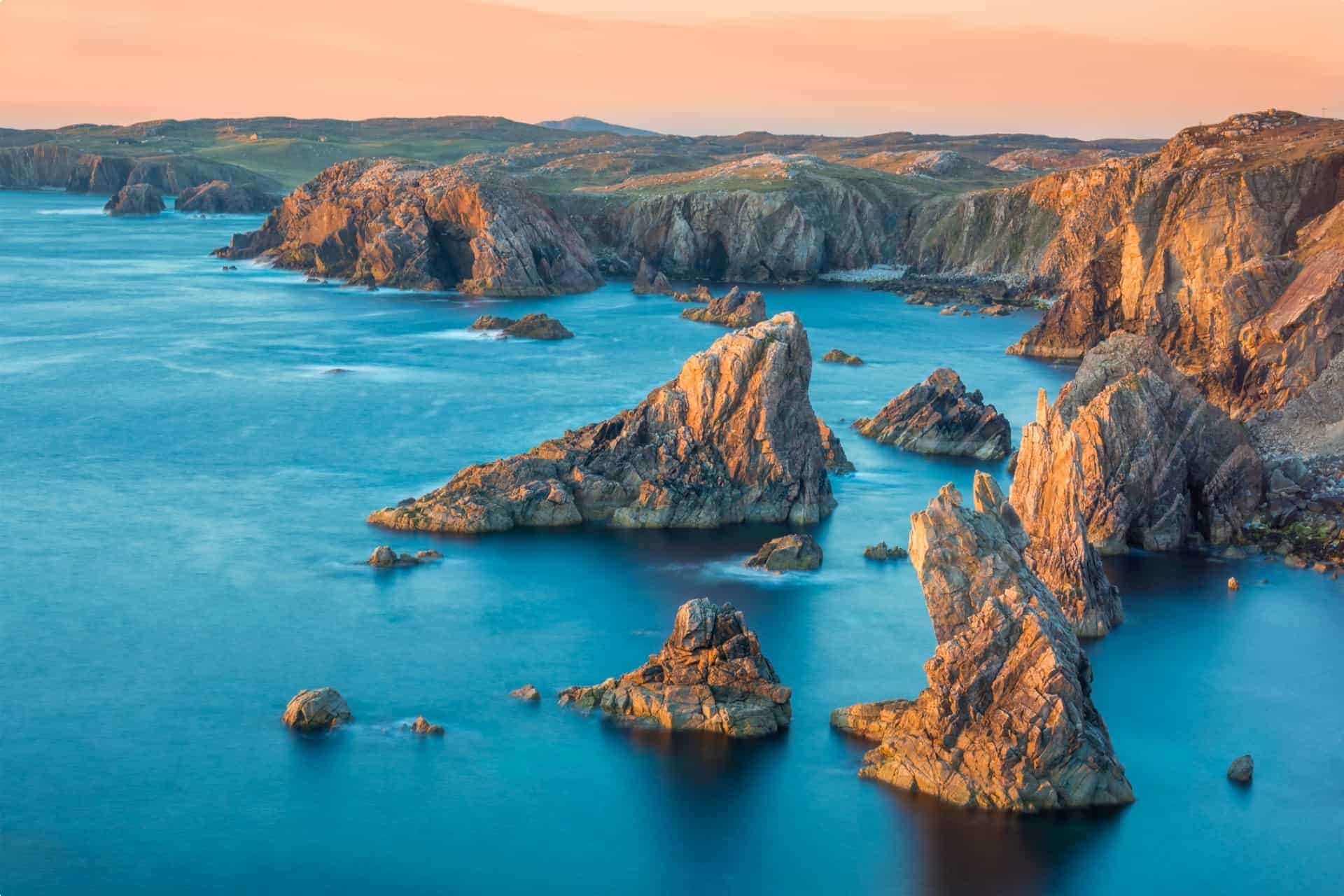
The Outer Hebrides are even more remote than the Inner Hebrides, sitting at the westernmost point of Britain and facing the Atlantic Ocean. They are made of the oldest rock on earth, laid down over 3,000 million years ago. Even more than in the Inner Hebrides, Gaelic is the spoken language here, though some communities today speak English. This is probably due to the relative isolation of the Outer Hebrides.
Don’t miss Lewis and Harris. Technically the one island, Lewis and Harris, connected only by a small peninsula, are often referred to as if they were two separate islands. Both are remote and almost treeless, including countless waterways and miles of white sandy beaches. Lewis is known for its wild moorlands, while the more mountainous Harris is the home of Harris Tweed.
Humans have lived on Lewis for 6,000 years, living mainly off the sea. For centuries, the peat bogs on the eastern shores of Lewis and Harris provided islanders with fuel. Prior to this, the woodlands covering the islands would have been the main source of energy. The Viking raiders certainly made extensive use of the woodlands for fuel and the lack of woodlands may be due to this. Today, there are only a few natural areas of woodland, as well as those planted in the mid 19th century near Lews Castle (a 19th century castle located just west of Stornoway, the islands biggest town).

One of the clues to the early culture of Lewis is the standing stones of Calanaish. In fact, these form a famous archaeological monument of the Outer Hebrides, equivalent to Stonehenge in the south of England. This megalithic complex has 13 stones in a circle with a series of radiating stones. The Neolithic people who built the arrangement probably used it to determine events related to the sun and the moon.
Make sure not to miss the Iron Age Carloway Broch (or Dun Carloway). A broch is an ancient round stone building used for housing and protection. Despite its age, Carloway Broch is well preserved. Scholars believe building began in the first century BCE, and it was occupied until 1300. In 1972, archaeologists found evidence of past hearths, together with ash and pottery.
Tarbert, the capital of Harris, is on the narrow peninsula to the south of Lewis. The main centre is Stornoway, in the northeastern side of Lewis. Don’t forget to try the local cheese and smoked fish! From here you can drive across to Arnol on the western coast, and visit the Blackhouse to learn about crofting life.
The Scottish Highlands
After spending time on Lewis, take the ferry from Stornoway across to mainland Scotland’s dramatic northern coast at Ullapool. Then drive through the Scottish Highlands to Thurso, across the northernmost tip of Britain. This route takes you through varied Highland scenery, from mountainous moorland and dazzlingly white beaches to gently undulating green pastureland, home to Highland cattle.
While travelling this route, stop off at Knockan Crag and visit the Smoo Cave at Durness. The spectacular rock formations at Knockan Crag are internationally famous, being one of the most important sites for understanding the formation of Northern Britain’s landscape. Don’t miss Dunnet Head, the most northerly point of mainland Britain (John o’ Groats is nearby). On a clear day, you’ll be able to see the Orkney Islands to the north, and the length of Scotland’s north coast.
The Northerly Islands: Orkney and Shetland islands
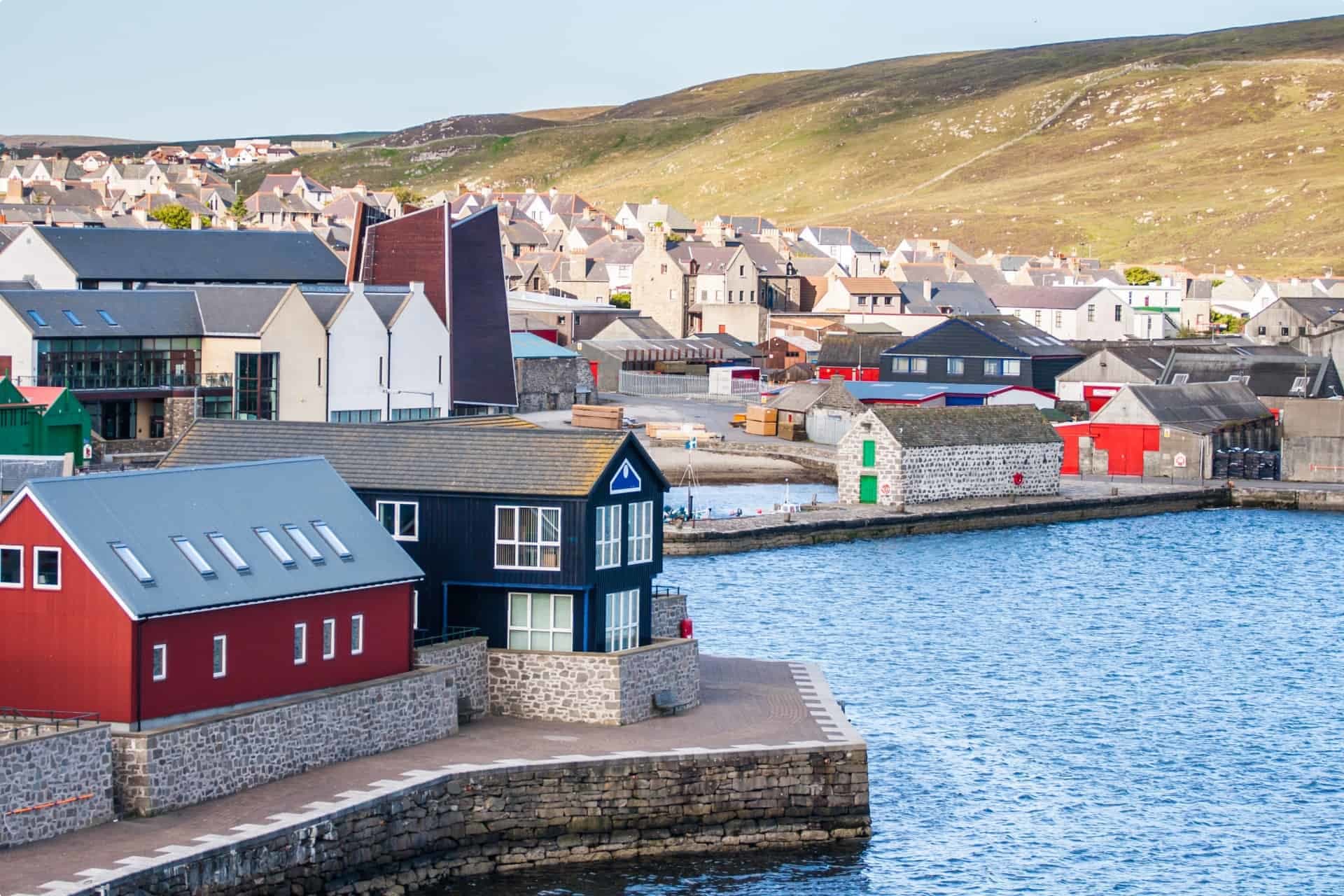
To get to the Orkney Islands, take the short ferry trip from Scrabster across the Pentland Firth to Stromness on the main Island. Make sure to look out the window: you’ll sail past the rock stack known as the Old Man of Hoy, and the red sandstone cliffs of St John’s Head.
In contrast to the Gaelic-influenced Inner and Outer Hebrides, the Orkney and Shetland Islands, to the north of Scotland share a closer connection to their Nordic past. Today, Orkney and Shetland are closer through language, lifestyle and history to their Nordic neighbours than they are to Lowland Scots.
Just over 300 kilometres from the Norwegian coast, the Shetland Islands were under Norse rule until 1469. Shetland has the famous and adorable Shetland ponies, seals, and colonies of sea birds, as well as historical treasures such as Jarlshof, home to humans for over 3,000 years.
In contrast, the Orkney Islands lie within only 10 kilometres of mainland Scotland. They are, however, perhaps even more famous for their dramatic coastal scenery and abundant marine bird life. They also have arguably Europe’s greatest concentration of prehistoric sites.
Both the Orkney and Shetland Islands played a part in the World Wars. It housed Italian POWs, was one of Churchill’s harbours, and was one of the sites for the secret transport of personnel via the “Shetland Bus”. This ran to and from Norway during WWII.
Touring the Orkney Islands
The Orkney islands are home to a number of important neolithic sites. Maes Howe, for example, is a burial chamber dated to 2500 BCE, and Skara Brae is a cluster of even older Stone Age dwellings. Skara Brae was a thriving village long before Stonehenge or even the Egyptian pyramids. However, the site remained unknown until in 1850, when wild winter storms ripped the grass from a high dune beside the Bay of Skaill, exposing the immense midden and the ruins of its ancient stone buildings. Skara Brae was excavated by an Australian archaeologist and philologist, Professor V. Gordon Childe, from 1927 to 1930 during his time as the Abercromby Professor of Archaeology at the University of Edinburgh.
Other relics on the Orkneys include the Ring of Brodgar, the third largest neolithic stone circle in Britain, and the Standing Stones of Stenness. The enormous Stones of Stenness are all that remains of a great stone circle on an ancient ceremonial site. These sites all form parts of the ‘Heart of Neolithic Orkney World Heritage Site’.
To experience the (relatively) modern history of the Orkneys, make sure to visit Kirkwall. Its name comes from the Old Norwegian kirkjuvagr meaning church bay. Here you can visit St Magnus Cathedral, known as the ‘Light in the North’. The Viking Earl Rognvald founded the cathedral in 1137 in honour of his uncle, St Magnus. Other nearby places of interest include Broch of Gurness and the Rennibister Earth-House.
Make sure to also wander through the narrow medieval streets of Stromness, an ancient port, and learn about the lives of local identities. These include the poet and writer George Mackay Brown, polar explorer John Rae, and Australian shipwreck survivor Eliza Fraser. Captain Cook’s ships, Discovery and Resolution, called in to Stromness in 1780 on their return from the south following Cook’s murder. Whaling ships, bound for the Davis Strait, began to call into the Stromness harbour during the 1770s.
Touring the Shetland Islands
You can sail between the Orkney and Shetland islands via overnight ferry. Northlink Ferries have all the attributes of a mini cruise liner, with ensuite cabins, a restaurant, bar and lounges.
The Shetland Islands are about 100 kilometres north of the Orkneys, with a Gulf Stream climate. Today, about 14 of the 100 or so islands in the Shetlands are occupied, with a population just over 27,000.
At least seven distinct civilisations inhabited the Shetlands, most famously the Vikings, who were more influential here than on the Orkneys.
History began on the Shetlands and Orkneys with hunter-gatherers following the northward retreat of the glaciers and ice sheets. Neolithic people with farming skills followed. They also had a culture interested in building megalithic structures. The Iron Age people were significant between 350 BCE and 200 CE, leaving behind the round stone houses called broch. One study records that there are the remains of 110 such buildings in the Shetlands. If the tides and weather permit, visit Mousa Broch, the finest surviving Iron Age broch tower in Britain. It stands at a height of over 13.3 metres.
While the names of some of the Shetlands reflect that Celtic missionaries probably visited in the Early Middle Ages, the Vikings were the next people to make a mark. In the eighth and ninth centuries, many Norse men and women settled on the Shetland islands after their initial raids. Their influence remains a significant part of local genetics and the cultural traditions of today’s population. The local lexicon is enriched with Nordic words, and the fire festival, Up Helley Aa, is held in Lerwick as a placatory gesture to the Norse gods.
Margaret, a Scandinavian princess betrothed to James III of Scotland, received the Orkney and Shetland Islands as her dowry in 1468. She went on to have three children – the first of whom became James IV who married Margaret, the sister of Henry VIII.
While you’re at the spectacular southern tip of Shetland, visit the puffins at Sumburgh Head Bird Sanctuary, adjacent to Shetland’s first lighthouse. Nearby you’ll find the extraordinary settlement site of Jarlshof, a site embracing 4,000 years of human history. Jarlshof contains a remarkable sequence of stone structures. There’s late Neolithic houses, a Bronze Age village, an Iron-Age broch and wheelhouses. From more recent times you’ll see a Norse longhouse, medieval farmstead, and a 16th century laird’s house. In the centre of Lerwick you can visit Fort Charlotte, a five-sided artillery fort built to protect the Sound of Bressay from the Dutch.
After enjoying the Shetland Islands, catch the overnight ferry from Lerwick to Aberdeen, and then travel on to Edinburgh.
Scottish Islands tours and the best of Scotland
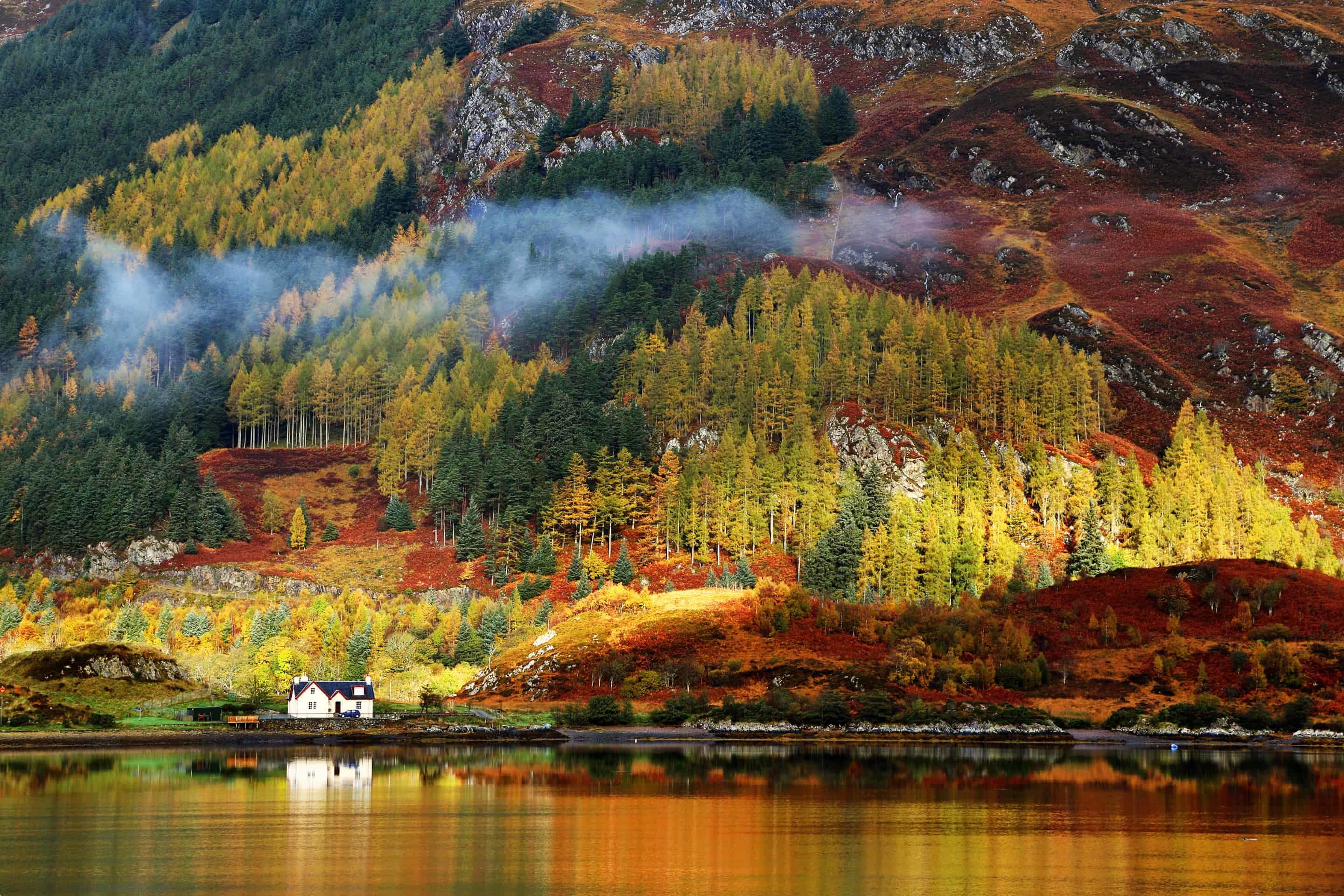
Odyssey has a range of programs touring Scotland, as well as Scottish island tours. Our Islands of Scotland and Shetland specialist tour is a unique 20 day tour exploring the culture and heritage of the Scottish islanders. Click here for the full itinerary!
If you’re keen to discover more about the island’s recent history and industry, try our Britain’s History through its Canals and Railways tour. This tour examines Britain through the lens of the Industrial Revolution. It includes scenic rail journeys and visits to the bridges, viaducts and aqueducts that facilitated enormous economic and social change.
Enjoy walking tours? Try our Walking Rural Britain tour, designed to introduce active walkers to the incredible variety of walks across Britain. On this 22 day fully escorted small group program we enjoy walks in Kent, Cornwall, and on the Wales/England border. We also spend four days in the Lake District, and then head up to the Scottish borders. In Scotland we have a day walking on Arran, where you can see the Stone Age monuments at Machrie Moor as well as a long tour along Buchan and Formatine way in the Scottish highlands.
If you prefer strolling through gardens, our Small Group Tour of British Gardens might be for you. This tour mainly focuses on England, although we spend the first three days in Edinburgh. We spend 18 days visiting 33 locations across Scotland, England and Wales. In Edinburgh, we visit the Royal Botanic Gardens, Dirleton Castle and gardens, Holyrood Park and Arthur’s Seat.
Read more about trips to Scotland in our blog posts, Visiting Scotland: Standing stones, neolithic history and whisky and Country Spotlight: Tours of Scotland and Best Islands in Scotland.
Updated July 2021.
Related Tours

20 days
May, Jul, Aug, SepScottish Islands and Shetland small group tours for seniors
Visiting Scotland
An escorted small group tour for couples and solo travellers of the Scottish isles including the isle of Skye draws on local guides to share their knowledge of the destinations in this unique part of Scotland. UNESCO world heritage site are visited as breathtaking scenery and authentic experiences are shared in a group of like minded people on this guided tour of remote Scotland.
From A$17,525 AUD
View Tour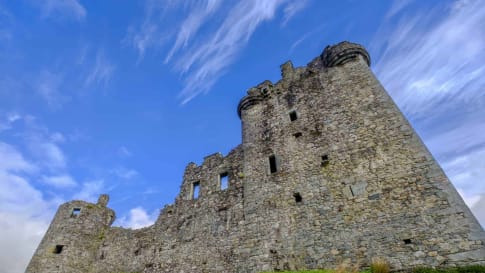
22 days
Jul, Sep, Jun, AugScotland small group tour | Tracing 5,000 years of history
Visiting Scotland
This guided tour of Scotland with a tour leader and local guides includes the isle of Skye, Orkney islands, the Scottish highlands with breathtaking scenery. Edinburgh including the royal mile, Palace of Holyroodhouse, Fort William, Urquhart castle, Stirling castle, loch lomond, Hadrians wall and New Lanark also a UNESCO World heritage site.
From A$15,995 AUD
View Tour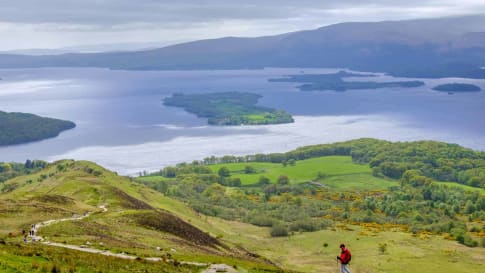
13 days
Jun, Aug, MayScotland's Great Trails Walking Tour
Visiting Scotland
An escorted walking tour of Scotland. This trip is mainly in the Scottish Highlands. Your tour leader guides you to Stirling Castle, Loch Lomond and Craignorms National park with experienced local guides. The tour for mature couples and solo travellers finishes in Edinburgh with time to visit Edinburgh Castle and the Royal mile a UNESCO World heritage site.
From A$11,560 AUD
View Tour
22 days
Apr, AugSeven Ages of Britain, snapshots of Britain through the ages.
Visiting England, Scotland
This guided small group tour starts in Scotland and finishes in England. On Orkney we have a day tour to the UNESCO World heritage site, Skara Brae, before travelling to city of York. Your tour leader continues to share the history from the Neolithic to the Victorian era. The tour concludes in the capital city, London.
From A$15,995 AUD
View TourRelated Articles

10 great books to read on the Scottish Isles
Why read books about the Scottish Isles before travelling there? This is recommended list of books for mature & senior travellers planning to travel to the Scottish Isles either as part of an Odyssey Tour…
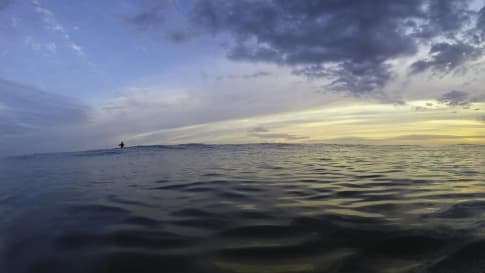
Atlantic Ocean and How it Shaped Ancient Communities In Europe
Article of interest for senior couples and mature solo travellers joining a small group European tour to Faroe Islands, Scottish Isles, Morocco or Portugal. Focus is on the early exploration of the Atlantic.

Exploring Britain's Prehistoric Past: The Definitive Guide for Travellers
Article on Britain's neolithic past for small group educational tours for senior couples and mature solo travellers interested in learning about Standing stones, burial chambers, Skara Brae and Stonehenge or Beaker people.
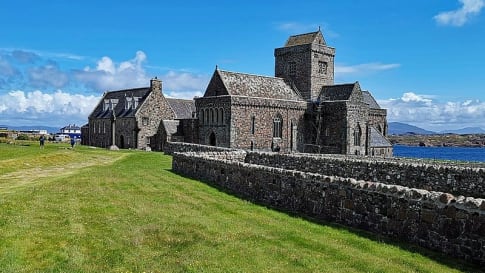
Iona, Scotland
Article about Iona Scotland for mature and senior travellers. Explore and learn about the Vikings, Standing stones, peat and also Whisky.
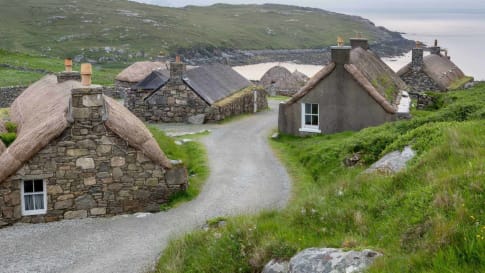
Islands of the Outer Hebrides: The Definitive Guide for Travellers
Scotland's Outer Hebrides are discussed in this article to assist the mature solo and couple in planning to visit Scotland and the British isles on a small group tour.

Isle of Arran, Scotland
Article about the Isle of Arran, a short journey from Glasgow. For senior couples and mature solo travellers interested in celtic history, the islands of Scotland including the inner and outer Hebrides on a small group tour.
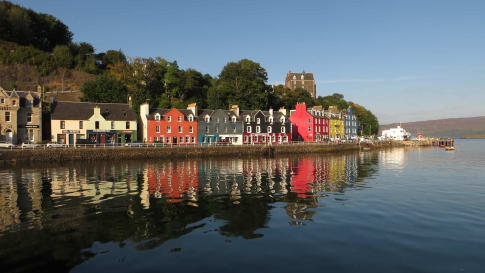
Isle of Mull, Scotland
Article for mature and senior travellers whether couples of solo travellers who are interested in exploring the inner Hebrides and outer Hebrides islands of Scotland, the ancient history including standing stones and celtic history and single malt whiskies with a hint of peat.

Isle of Skye, Scotland
Article about Scotland's Isle of Skye for senior couples and solo travellers seeking to explore on a small group tour of the Scottish isles learning about Scottish history, the Vikings and Atlantic trading routes.
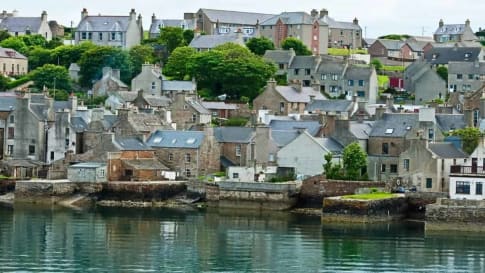
Orkney Islands, Scotland
Explore the Orkney and other isles of Scotland on a small group tour for senior couples or solo travellers interested in Scottish history. Learn about Skara Brae and prehistoric Britain as well as the importance of Peat and Whisky.
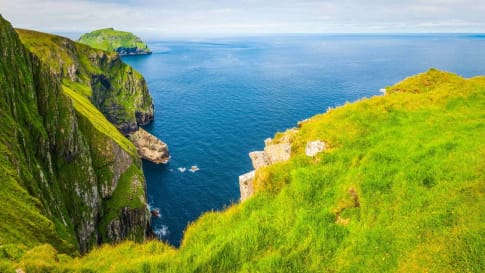
Questions about the Outer Hebrides, Scotland for senior travellers.
Explore and learn about on a Seniors small group tour of the Orkney Islands and other Scottish islands. Learn about the pastoral, cultural and historic settlement of the islands including Skara brae.
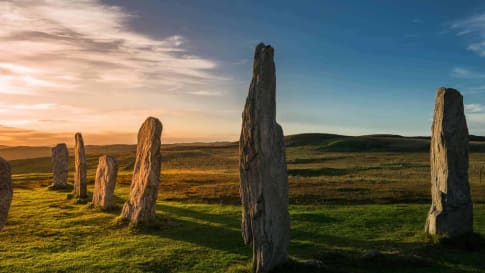
Shetland Islands Discovered: The Definitive Guide for Travellers
Article for senior and mature travellers, couples or solo travelers, interested in visiting the Shetland isles of Scotland. Explore on a small group tour to learn about the Bronze age, standing stones, peat and whisky and more when visiting the Scottish isles.
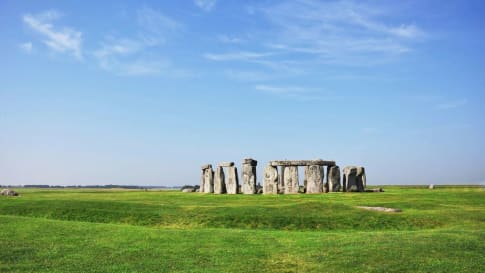
Standing Stones in Prehistoric Britain
Standing Stones in Prehistoric Britain Stonehenge, England, United Kingdom The standing stones of Great Britain continue to be the subject of research and archaeological hypothesis. Britain is not the only location where standing stones are…
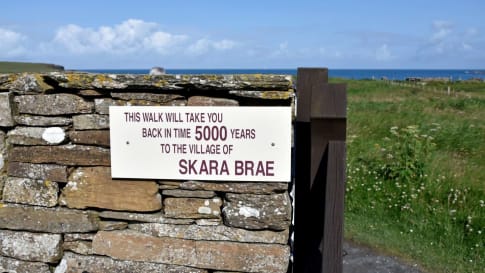
Skara Brae, Scotland
Article introducing Neolithic Britain and the trading routes to Iceland, the Faroe Islands and the Irish sea. Skara brae is included on the Scottish isles tour and the Prehistoric Britain program. Small group tours for senior couples and mature solo travelers.
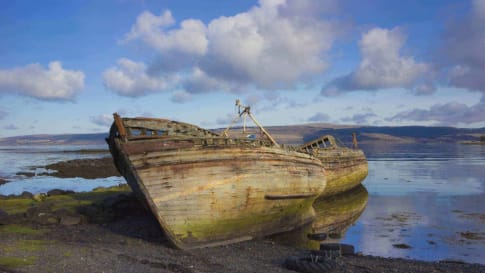
The Best of the Scottish Islands
small group tours of the Scottish isles including Orkney, Skye, Iona and Shetland plus others for senior couples and solo travellers.
